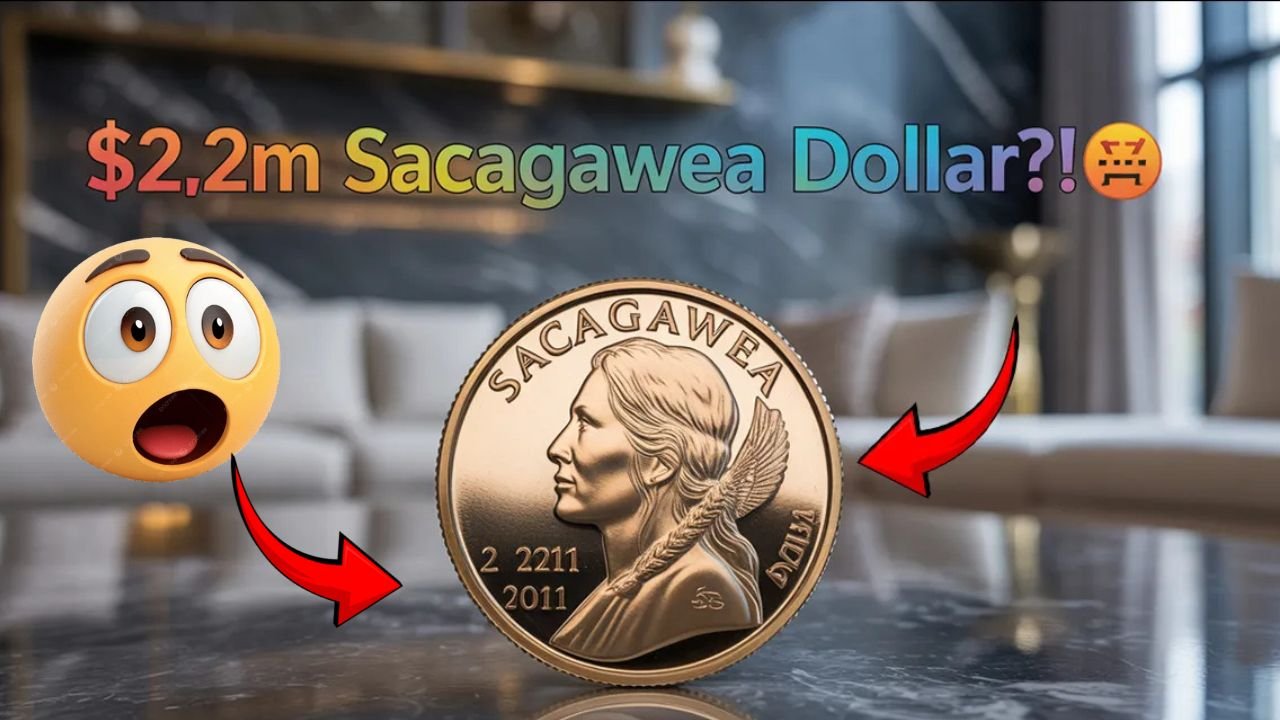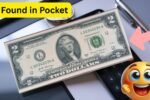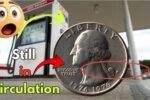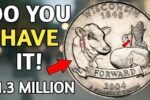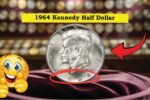2011 Sacagawea Dollar: In the world of rare coin collecting, errors can sometimes turn an ordinary piece of currency into a multi-million-dollar treasure. Such was the case with a 2011 Sacagawea dollar that recently sold for an astonishing $2.2 million at auction. What made this coin so valuable? It featured a rare reverse rotation error, a minting mistake that captivated collectors and drove bidding to unprecedented heights.
Understanding the Sacagawea Dollar
The Sacagawea dollar, first minted in 2000, honors the Shoshone woman who played a crucial role as a guide for the Lewis and Clark Expedition. The coin’s obverse (heads side) features a portrait of Sacagawea with her infant son, Jean Baptiste Charbonneau, while the reverse (tails side) typically depicts an eagle in flight. These coins are commonly found in circulation, but certain errors make them highly sought after by numismatists.
What Is a Reverse Rotation Error?
A reverse rotation error occurs when the reverse side of a coin is struck at an incorrect angle relative to the obverse. Normally, when a coin is flipped vertically (top to bottom), the reverse should appear upright. However, in a 180-degree rotation error, the reverse is upside down when the obverse is facing correctly. This type of misalignment is extremely rare, especially in modern U.S. coinage, making such errors incredibly valuable.
The Discovery of the 2011 Error Coin
The exact origins of this particular 2011 Sacagawea dollar remain unclear, but it is believed to have been discovered in circulation by a sharp-eyed collector. Unlike typical mint errors that are caught during quality control, this coin somehow entered public circulation unnoticed. Once authenticated by experts, its rarity and condition propelled its value into the millions.
Why Did This Coin Sell for $2.2 Million?
Several factors contributed to the staggering auction price:
-
Extreme Rarity: Reverse rotation errors are exceptionally uncommon in modern U.S. coins.
-
Perfect Condition: The coin was in pristine, uncirculated condition, with no signs of wear.
-
High Demand: Error coins attract serious collectors willing to pay top dollar for unique pieces.
-
Historical Significance: As one of the few known examples, it became a numismatic sensation.
The combination of these elements turned this coin into a record-breaking sale, shocking even seasoned collectors.
Comparison to Other Valuable Error Coins
While $2.2 million is an extraordinary sum for a modern error coin, it is not the most expensive ever sold. For example, the 1933 Double Eagle sold for over $7 million, and the 1794 Flowing Hair Dollar fetched more than $10 million. However, the 2011 Sacagawea dollar stands out as one of the most valuable modern error coins in history.
Table: Notable High-Value Error Coins
| Coin | Year | Error Type | Sale Price |
|---|---|---|---|
| 1933 Double Eagle | 1933 | Unauthorized Issue | $7.6 Million |
| 1794 Flowing Hair Dollar | 1794 | First U.S. Silver Dollar | $10 Million+ |
| 2011 Sacagawea Dollar | 2011 | Reverse Rotation Error | $2.2 Million |
| 1955 Doubled Die Penny | 1955 | Double Struck Obverse | $1.5 Million |
How to Identify a Reverse Rotation Error
For collectors hoping to find a similar treasure, here’s how to spot a reverse rotation error:
-
Check Alignment: Flip the coin vertically—if the reverse is upside down when the obverse is right-side up, it may be an error.
-
Examine Details: Look for sharp strikes and clear design elements, as mint errors often appear on well-preserved coins.
-
Consult an Expert: Authentication by a professional grading service (like PCGS or NGC) is essential to confirm the error.
FAQs About the 2011 Sacagawea Dollar Error
Is the 2011 Sacagawea dollar with a reverse rotation error still in circulation?
It is highly unlikely, as most error coins are discovered early and removed from circulation by collectors.
How many reverse rotation error Sacagawea dollars exist?
Only a handful are known to exist, making them some of the rarest modern U.S. coins.
Can I find a valuable error coin in my pocket change?
While extremely rare, some error coins do slip into circulation. Careful examination of coins may yield surprising discoveries.
What should I do if I think I have an error coin?
Have it evaluated by a professional coin grading service to confirm its authenticity and potential value.
Conclusion
The $2.2 million sale of the 2011 Sacagawea dollar with a reverse rotation error highlights the fascinating world of rare coin collecting. Such errors, though accidental, create numismatic legends and remind us that even modern coins can become priceless treasures. For collectors, the hunt for these rare mistakes continues, proving that fortune can sometimes be found in the most unexpected places.
